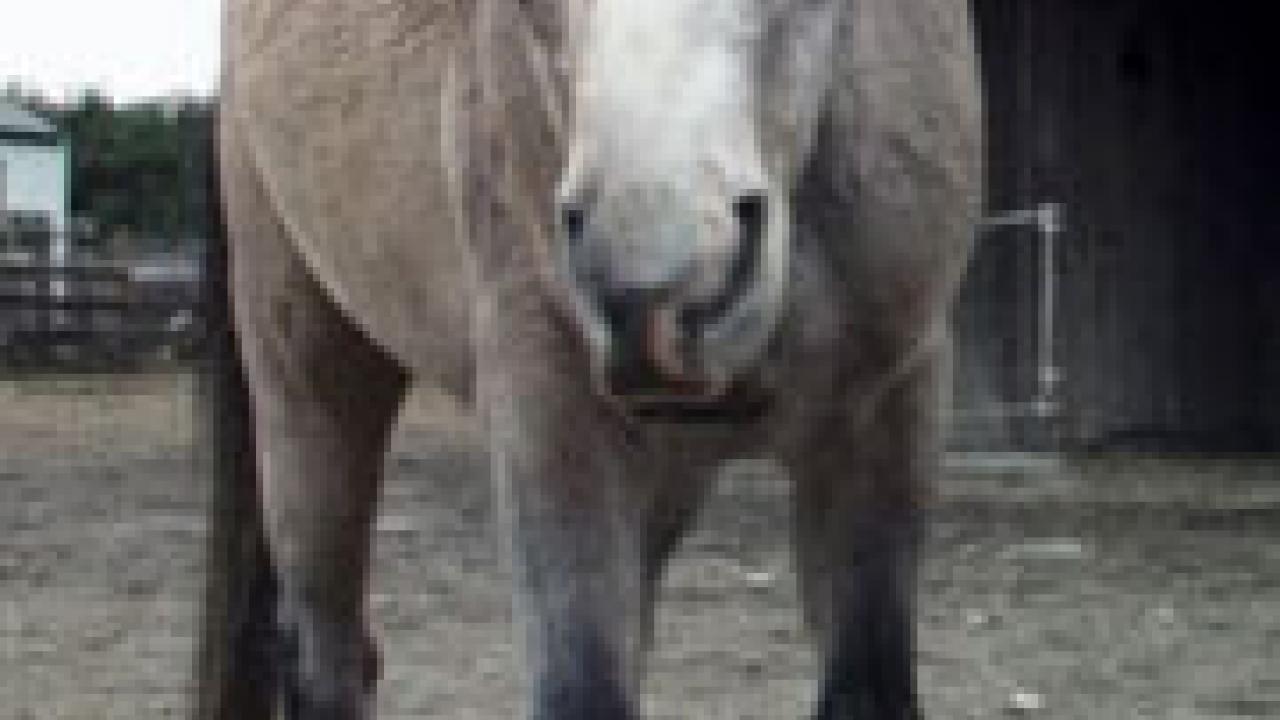The whole genome sequence of the domestic horse has been completed by the genome-sequencing center of The Broad Institute of MIT and Harvard, in collaboration with an international team of researchers that includes scientists at the University of California, Davis.
Findings from the genome sequence have important implications for improved breeding of horses, which constitute a $39 billion industry in the United States alone, and for studies of human health. They will be reported in the Nov. 6 issue of the journal Science.
“This very high-quality genome sequence of the horse is important because it gives us access to specific sequence information that we can now apply to identify the genes for specific traits in the horse,” said geneticist Cecilia Penedo of UC Davis’ Veterinary Genetics Laboratory, a co-author on the paper.
As a collaborator in the international Horse Genome Project, Penedo contributed to the genome sequencing effort by supplying DNA from Arabian horses and Quarter horses and by working on a horse linkage map, which identified a linear order of genetic markers along the horse chromosomes.
Also collaborating on the project from UC Davis were James Murray, a professor of animal science who has worked with the Horse Genome Project since its inception in 1995, and Stephanie Pedroni, then a UC Davis staff researcher and genetics graduate student.
“Having access to multiple genome sequences makes it easier to understand all genomes, including our own,” Murray said. “By looking at the horse genome, we can better understand human biology and human diseases.”
In reporting the horse genome sequence, the researchers noted that there are more than 90 hereditary conditions that affect both humans and horses. Because horses share these conditions, which include infertility, inflammatory diseases and muscle disorders, the horse is an important model for improving the understanding of human diseases.
The sequencing project revealed that the horse genome is somewhat larger than the dog genome and smaller than the human and cow genomes. In comparing the horse and human chromosomes, the researchers discovered that 17 out of 32 -- or 53 percent of -- horse chromosome pairs are composed of material from a single human chromosome, while only 29 percent of dog chromosomes are composed of material from a single human chromosome. This indicates that fewer chromosome rearrangements separate humans from horses than separate humans from dogs.
The researchers were also surprised to find on horse chromosome 11 the existence of an evolutionarily new centromere. Centromeres are key structural features of chromosomes that are necessary for their movement when cells divide, a function that ensures normal distribution of all genetic material to each daughter cell. The functional but evolutionarily immature centromere in the horse may provide a model to study factors responsible for how centromeres function.
Penedo noted that the completion of the high-quality horse genome sequence has provided researchers around the world with ready access to specific gene sequences that can be applied to mapping various traits of the horse.
She and genetics graduate student Leah Brault are using this information in their research focused on identifying the cause of equine cerebellar abiotrophy, a genetic, neurological condition found almost exclusively in Arabian horses. Studies have shown that a horse can carry the gene for equine cerebellar abiotrophy and not be affected by it. However, if two horses carrying the gene are bred, there is a 25-percent likelihood that the resulting foal will manifest the condition, which causes serious neurological problems including head tremors and poor equilibrium.
The sequencing of the horse genome was funded by the National Human Genome Research Institute, the Dorothy Russell Havemeyer Foundation, the Volkswagen Foundation, the Morris Animal Foundation, and Italy's Programmi di Ricerca Scientifica di Rilevante Interesse Nazionale.
About UC Davis
For 100 years, UC Davis has engaged in teaching, research and public service that matter to California and transform the world. Located close to the state capital, UC Davis has 31,000 students, an annual research budget that exceeds $500 million, a comprehensive health system and 13 specialized research centers. The university offers interdisciplinary graduate study and more than 100 undergraduate majors in four colleges -- Agricultural and Environmental Sciences, Biological Sciences, Engineering, and Letters and Science -- and advanced degrees from six professional schools -- Education, Law, Management, Medicine, Veterinary Medicine and the Betty Irene Moore School of Nursing.
Media Resources
Pat Bailey, Research news (emphasis: agricultural and nutritional sciences, and veterinary medicine), 530-219-9640, pjbailey@ucdavis.edu
Cecilia Penedo, Veterinary Genetics Laboratory, (530) 752-7460, mctorrespenedo@ucdavis.edu
James Murray, Animal Science, (530) 752-3179, jdmurray@ucdavis.edu
